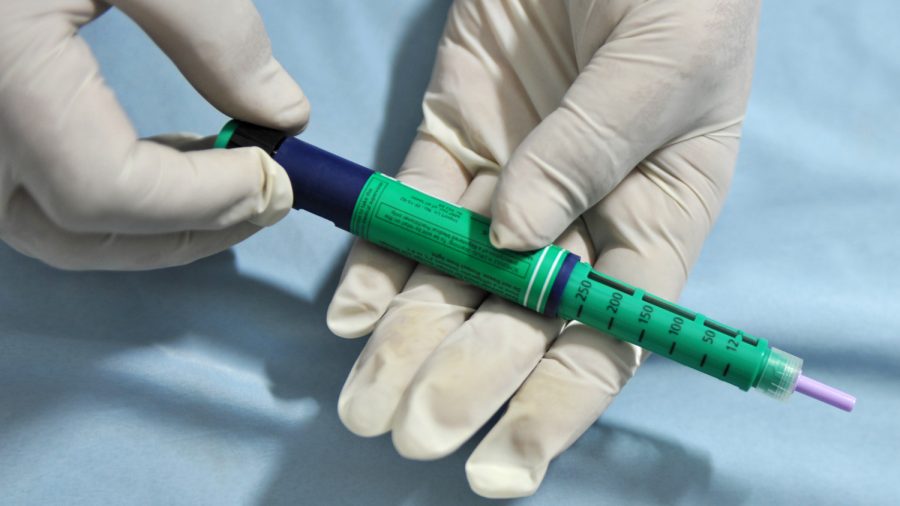Colorado has become the first state in the United States to limit co-payments for insulin. For diabetics with private insurance who rely on insulin to control their blood sugar levels, the move will alleviate their financial costs.
Gov. Jared Polis (D) on May 22 signed a bill into law that will cap what patients are required to pay out of pocket on insulin medications at $100, which will apply to those with private insurance.
“We will declare that the days of insulin price gouging are over in Colorado,” Polis said on May 22 at a signing ceremony, according to CBS Denver.
“With essentially no change in the product, insulin prices have inexplicably gone up 1,000% in the last 25 years,” Polis wrote in a statement.
“We’re fighting back against the skyrocketing price of insulin by putting a $100 cap on a one month supply of insulin.”
With essentially no change in the product, insulin prices have inexplicably gone up 1000% in the last 25 years. We’re fighting back against the skyrocketing price of insulin by putting a $100 cap on a one month supply of insulin. pic.twitter.com/GMbYkgdF9K
— Jared Polis (@GovofCO) May 22, 2019
The law takes effect in January 2020. While it caps what patients pay, it will not put a limit on what insurance companies are charged by insulin manufacturers. It’s expected that the insurers will pay the difference, the Denver Post reported.
The new law will also require that Attorney General Phil Weiser investigate why insulin prices have increased drastically in recent years. His findings are expected to be released by November 2020.
The bill was sponsored by state Rep. Dylan Roberts (D), who had lost his brother, Murphy, to diabetes, according to the Associated Press.
Insulin Costs ‘Skyrocketing’
Many people have been paying between $600 to $900 per month in co-payments for insulin, according to CBS Denver. For those whose health care cover involves significant cost-sharing, out-of-pocket costs increase to as much as $1,000, the Denver Post reported.
The price that patients with Type 1 and Type 2 diabetes pay for insulin had doubled from 2012 to 2016 in the United States, according to the Health Care Cost Institute.
A report from representatives Tom Reed (R-N.Y.) and Diana DeGette (D-Colo.) found the same. They said that the price of insulin has been “skyrocketing,” having doubled since 2012, after nearly tripling in the previous 10 years.
“We care about the 7.5 million Americans who rely on insulin to manage their blood sugar levels and prevent debilitating complications every day,” Reed and DeGette said in a statement in November.
“Many cannot live without it, but countless patients struggle to afford it. As their out-of-pocket costs continue to rise, the current system is unfairly putting insulin out of reach—placing millions of lives at risk.”
Colorado just became the first state to cap #insulin co-pays at $100 per month. This is awesome! Huge thanks to our Advocacy team, #Diabetes Advocates, Governor Jared Polis, Representative Dylan Roberts, and Senators Kevin Priola and Kerry Donovan! pic.twitter.com/plyNYdZRhm
— Amer. Diabetes Assn. (@AmDiabetesAssn) May 22, 2019
According to Reed and DeGette, the insulin drug market is complicated and involves drug makers, wholesalers, pharmacies, pharmacy benefit managers, and health insurers.
Multiple factors affect the list price of the drug, and from there, the middlemen in the supply chain face incentives that drive up the price of insulin even further.
Meanwhile there are relatively few downward forces that keep the price under control, Reed and DeGette found.
“In the United States, insulin is manufactured by only three companies, while three large wholesalers control about 85 percent of the drug distribution market,” they said in a statement.
About 1.2 million Americans have type 1 diabetes, a chronic condition in which the pancreas stops producing insulin. Type 2 diabetes, a growing problem linked to the obesity epidemic, is far more common, affecting nearly 30 million people in the United States, according to the American Diabetes Association.
While type 2 diabetes is treated with a variety of other medicines, those patients may also eventually become dependent on insulin as the disease progresses.
Reuters contributed to this report.
From The Epoch Times

